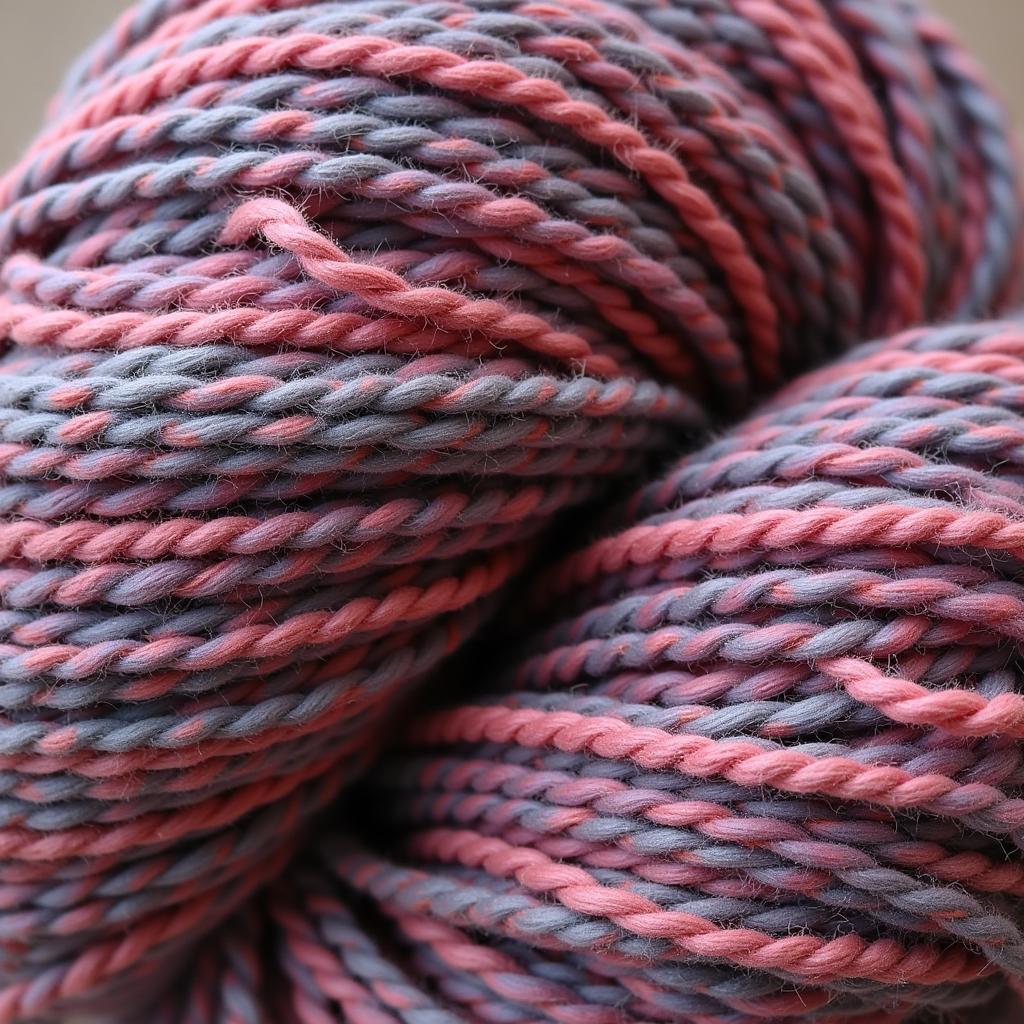Heathered color refers to a blended, multi-tonal effect in fabrics, yarns, or surfaces, creating a subtle, textured appearance. It’s achieved by combining different colored fibers or pigments, resulting in a richer, more complex hue than a solid color. Heathered colors often evoke a sense of depth, visual interest, and a slightly vintage or rustic feel. They’re popular in clothing, home decor, and even graphic design, offering a versatile and sophisticated aesthetic.
Understanding the nuances of heathered colors can greatly enhance your design choices, whether you’re selecting apparel, choosing paint for your walls, or creating a digital masterpiece. This article delves into the world of heathered colors, exploring their characteristics, creation methods, and applications in various fields. Similar to what is melange color, the heathered effect adds depth and complexity to a surface.
Decoding the Heathered Effect: A Closer Look
What makes a color “heathered”? The key lies in the intermingling of different shades. Imagine intertwining strands of light gray and dark gray yarn – the resulting fabric would have a heathered gray appearance. This blending creates a visual texture that sets it apart from a flat, single-tone gray. The effect can be subtle, with closely related shades, or more pronounced, with contrasting colors creating a dynamic interplay. This technique is often used in t-shirt designs, as discussed in how many t shirt colors do sticker mule offer reddit.
How Are Heathered Colors Created?
Heathered colors can be achieved through various methods, depending on the material. In textiles, it involves twisting together different colored fibers before spinning them into yarn. For paints and other surface coatings, it might involve layering or blending different pigments. Digital design utilizes software to simulate the heathered look by combining color gradients and textures.
 Heathered Fabric Close-Up: Different colored fibers interwoven to create a heathered effect.
Heathered Fabric Close-Up: Different colored fibers interwoven to create a heathered effect.
Popular Heathered Color Examples
Several heathered colors have gained widespread popularity. “Heather gray,” a blend of gray and white, is a classic example, frequently seen in sweatshirts and t-shirts. “Charcoal heather,” a deeper, more dramatic variation, combines dark gray and black. Other popular options include heathered blues, greens, and even pinks, offering a wide range of choices for various design applications. You can learn more about specific heathered colors, like charcoal heather, by exploring resources like what is charcoal heather color. This gives you a better understanding of the spectrum within the heathered color family.
Why Choose Heathered Colors?
The appeal of heathered colors lies in their versatility and visual appeal. They add a touch of sophistication to casual wear, create a sense of warmth and comfort in home decor, and offer a unique aesthetic in graphic design. The inherent texture of heathered colors also helps to disguise minor imperfections and adds a sense of durability. Knowing the underlying color composition helps you make informed decisions about pairing heathered items with other elements in your design. For instance, understanding what is black heather color allows for effective coordination with other colors and textures.
 Heathered Wall Paint Texture: Wall painted with a heathered gray paint showing subtle color variations and texture.
Heathered Wall Paint Texture: Wall painted with a heathered gray paint showing subtle color variations and texture.
Heathered Colors in Design: Practical Applications
From fashion to interiors, heathered colors find their place in a diverse range of design applications. In clothing, they lend a relaxed yet stylish vibe to t-shirts, sweaters, and activewear. In home decor, heathered fabrics bring a touch of understated elegance to upholstery, curtains, and throw pillows. Graphic designers utilize heathered textures to add depth and visual interest to backgrounds, logos, and other design elements. Understanding the properties of different colors, such as what color is graphite, can help in creating compelling designs that utilize heathered effects.
“Heathered colors allow for a subtle play of light and shadow, creating a dynamic surface that captures the eye,” says renowned color consultant, Anya Sharma. “Their versatility makes them a valuable tool in any designer’s arsenal.”
In conclusion, heathered color provides a unique and appealing alternative to solid colors, adding depth, texture, and visual interest to a variety of applications. Whether you’re choosing clothing, decorating your home, or working on a graphic design project, understanding what a heathered color is and how it’s created can elevate your design choices and help you achieve a more sophisticated and nuanced aesthetic. Understanding heathered color allows you to make more informed decisions, resulting in a richer and more dynamic final product.
FAQ
- What is the difference between heathered and solid colors?
- How can I create a heathered effect in my artwork?
- What are some common uses of heathered fabrics?
- Are heathered colors suitable for formal wear?
- How do I care for garments with heathered colors?
- Can I mix and match different heathered colors?
- Where can I find heathered paint for my walls?
Need support? Contact us at Phone Number: 0373298888, Email: [email protected] Or visit us at: 86 Cau Giay, Hanoi. We have a 24/7 customer service team.

